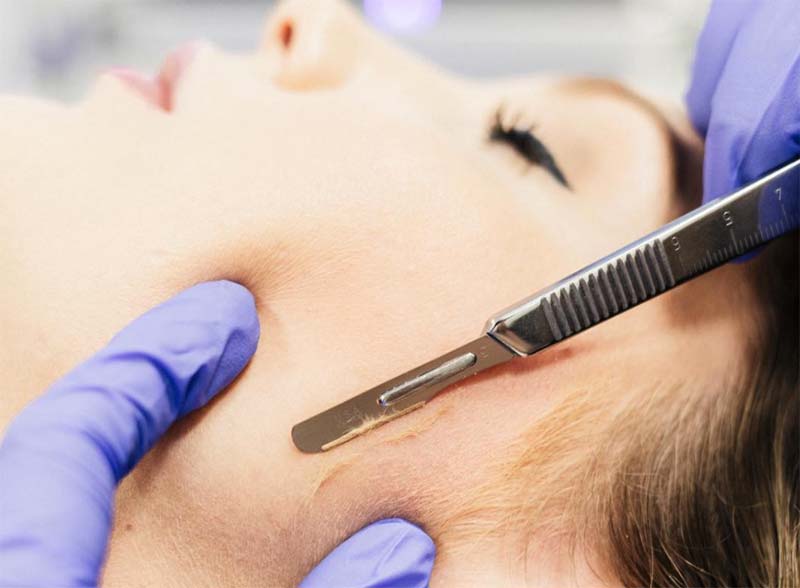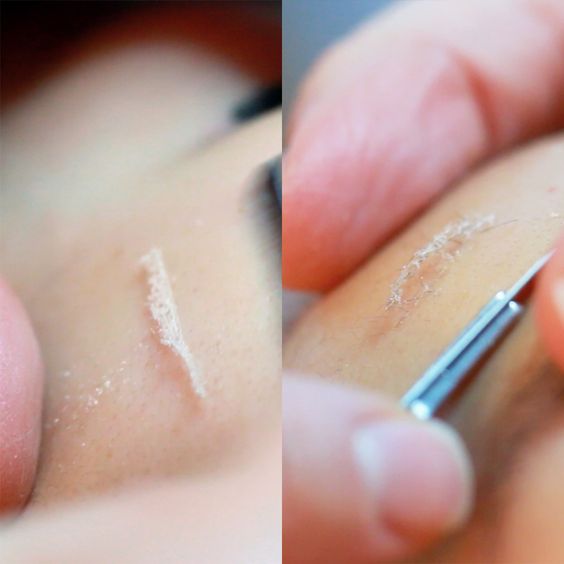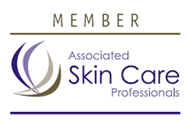Dermaplaning
Dermaplaning is a wonderful exfoliating treatment that removes delicate layers of dead skin cells from the surface of the face.  Using a fine scalpel, the Esthetician certified in Dermaplaning meticulously grazes the skin’s surface to reveal fresh, healthy skin.
Using a fine scalpel, the Esthetician certified in Dermaplaning meticulously grazes the skin’s surface to reveal fresh, healthy skin.
This process not only removes dead skin cells, but also removes the fine layer of hair on the face (vellus hairs, sometimes called “peach fuzz”), revealing an ultra-smooth, glowing complexion. As with any type of exfoliation, the removal of dead skin cells allows home care products to be more effective, reduces the appearance of fine lines, evens skin tone and assists in reducing milia, closed and open comedones, and minor breakouts associated with congested pores. Dermaplaning can be an effective exfoliation method for clients that have couperose (tiny blood vessels near the surface of the skin), sensitive skin or allergies that prevent the use of microdermabrasion or chemical peels. Due to the contours of the face, certain areas of the face (such as the eyelids and nose) are not treatable using this method.
What should you expect during your treatment?
The esthetician will perform a thorough skin analysis prior to your first dermaplaning. If dermaplaning is not appropriate, you will be informed during this session and an alternative treatment may be recommended instead. If dermaplaning is not contraindicated, maximum results are obtained by participating in a series of treatments plus following a home care regimen.
Your esthetician will take every precaution to ensure that your skin is well hydrated and calm following each session. However, you may experience excessive dryness or even some peeling between sessions, which may or may not be normal. Always  contact me if you have any concerns. More sensitive skin may experience some redness after the first couple of sessions. This normally goes away after 2 to 3 hours. Dermaplaning may cause minor superficial abrasions which may not appear until a day or two following your treatment. If this happens, it is only temporary (and rare). After your treatment, SPF 30+ MUST be worn at all times. Tanning beds should never be used. You are making an investment in your skin: therefore, it is to your benefit to continue to protect it long after your series of treatments is completed.
contact me if you have any concerns. More sensitive skin may experience some redness after the first couple of sessions. This normally goes away after 2 to 3 hours. Dermaplaning may cause minor superficial abrasions which may not appear until a day or two following your treatment. If this happens, it is only temporary (and rare). After your treatment, SPF 30+ MUST be worn at all times. Tanning beds should never be used. You are making an investment in your skin: therefore, it is to your benefit to continue to protect it long after your series of treatments is completed.
Each Dermaplaning Facial is paired with strategically chosen topical products, meant to nourish and replenish the skin. Is satisfaction guaranteed? The majority of clients receive noticeable, satisfactory to above average results with a series of treatments and a commitment to a daily skin care regimen. However, this outcome cannot be guaranteed as maximum results are highly dependent on age, cumulative sun exposure, health, lifestyle, genetic traits, general skin condition, and willingness to follow recommended protocols. Be aware that many changes may occur deeper within the skin over time. To continue the maintenance of your skin after you complete your treatment, additional types of treatment may be recommended.
Contraindications
Although it is impossible to list every potential risk and complication, the following conditions are recognized as contraindications for dermaplaning treatment and must be disclosed prior to treatment.
• Active acne • Active infection of any type, such as herpes simplex or flat warts. • Any raised lesions (we can go around those) • Any recent chemical peel procedure (within the past week or so, depending on the skin) • Chemotherapy or radiation • Eczema or dermatitis • Family history of hypertrophic scarring or keloid formation • Hemophilia • Hormonal therapy that produces thick pigmentation • Moles (we can go around those) • Oral blood thinner medications • Overactive Rosacea • Scleroderma • Present Skin Cancer • Sunburn • Telangiectasia/erythema may be worsened or brought out by exfoliation • Thick, dark facial hair • Uncontrolled diabetes • Use of Accutane within the last year • Vascular lesions
Post-Treatment/Home Care
Aerobic exercise or vigorous physical activity should be avoided until all redness has subsided. Direct sunlight exposure is to be completely avoided immediately following the treatment (including any strong UV light exposure). Although SPF 30+ should already be a part of your daily skin care, after dermaplaning, SPF 30+ must be applied daily to the treated area for a minimum of two weeks. Twice daily cleanse the treated area with a posttreatment cleanser, followed by a serum or treatment cream and follow with SPF 30+ sunscreen.
A dermaplaning treatment is an excellent service to have on a monthly basis to maintain healthy cellular turnover, and also excellent to experience before a big event as it helps create an ideal foundation for makeup application.
This is an example of what you may leave behind after a dermaplaning treatment:
Book Your Dermaplaning Treatment... (or add it on to your facial of choice!).




